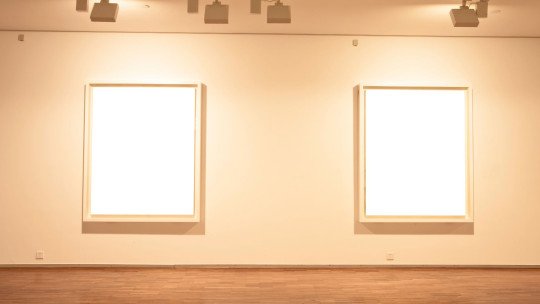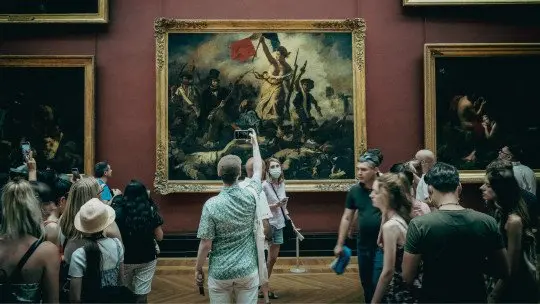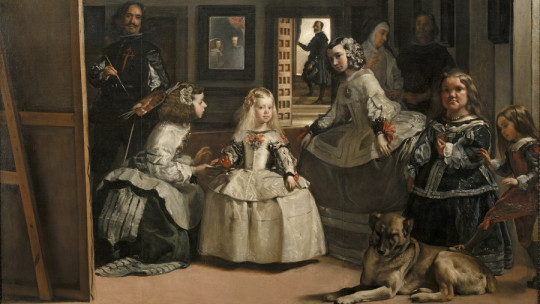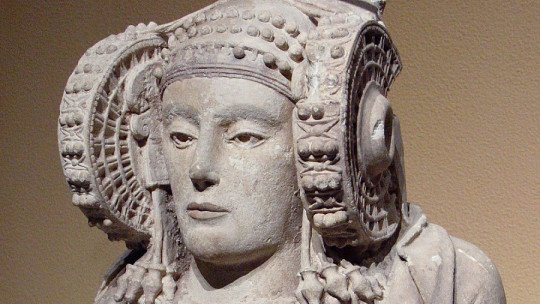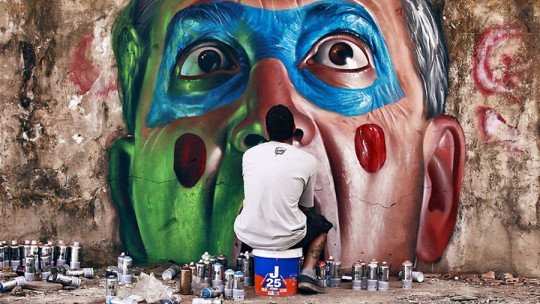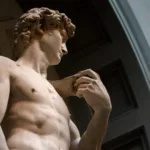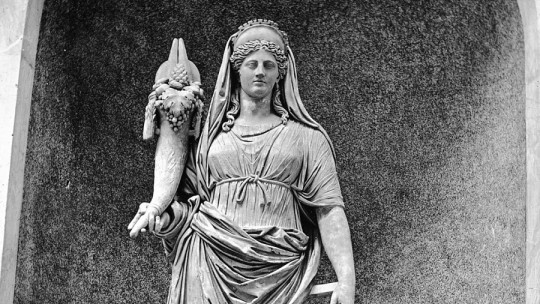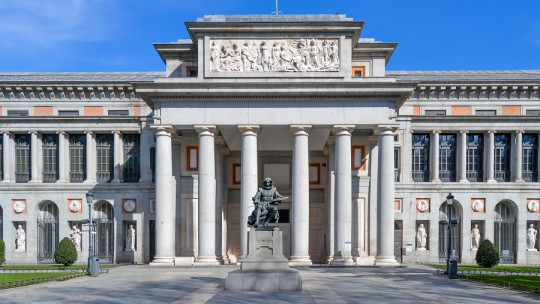
In Spain there is a large number of very interesting museums that will delight lovers of museums, art and culture: from the universally known Prado Museum to the less known (but no less interesting) Museum of Fine Arts of Seville , passing through forgotten gems such as the National Museum of Sculpture of Valladolid or the Diocesan Museum of Sacred Art of Vitoria-Gasteiz.
In this article we propose a tour of 7 of the best Spanish museums that you can’t miss. We hope you enjoy the trip.
The most interesting museums to visit in Spain
Obviously, in such a brief summary we cannot include all the museums that we consider essential to visit in Spain. In any autonomous community and Spanish region you will find a multitude of interesting museums, which house many gems waiting to be discovered. However, we have tried to establish this tour based on a series of characteristics: the international fame of the museum; its museum quality (which not only has to do with the quality of the pieces on display, but also how they are displayed to the visitor); and, finally, the number of masterpieces they keep inside. Let’s see, then, what this essential tour of Spanish museums is.
1. National Prado Museum (Madrid)
The National Prado Museum (better known simply as the Prado Museum) is one of the most recognized and visited art galleries in the world In 2013, it ranked as the eighteenth museum that received the most visitors internationally, which gives an idea of the high quality of its museum offering.
In 2019, this art gallery celebrated its 200 years of history. Its foundation was under royal protection, since its promoter was none other than Queen María Isabel de Braganza, the second wife of Fernando VII.
Previously, the building (the work of neoclassical architect Juan de Villanueva) had housed the National Cabinet of Natural History. The project was conceived as part of the urbanization of Paseo del Prado, within the great urban development impulse that Madrid had under the reign of Carlos III (who, not in vain, was known as “the best mayor of Madrid”). The War of Independence left the Villanueva building almost in ruins, and only in 1818, at the request of María Isabel de Braganza, did the renovation of the old museum begin.
The inventory of Prado works amounts to more than 8,600 of which a little less than half come from the royal collections, which was the original core of the works exhibited in 1819. This collection, made up of works by such important artists as Van Eyck, Hieronymus Hieronymus, Rubens and Titian, is It is due to the interest that the Spanish crown, especially the Austrians, always showed in collecting works of art.
The Prado National Museum is an essential stop, since there you can find works by undisputed masters of universal art. Among the works kept in the permanent collection, we find Las Meninas by Velázquez, The garden of delights of Hieronymus Hieronymus and The May 3 shootings by Francisco de Goya, among other masterpieces.
2. National Museum of Art of Catalonia (MNAC)
Located in Barcelona, Catalonia, it is one of the most important Spanish museums. Its collection of Romanesque art is considered one of the most complete in the world so if you like art and, especially, the Middle Ages, you can’t miss it.
The current museum was inaugurated in 1990 with collections from other museums in Barcelona. The imposing building that houses the collections and that stands majestically at the end of María Cristina Avenue is the National Palace, built in 1929 for the International Exhibition. The construction, made in an eclectic style that mixes baroque domes with Renaissance elements, is already one of the symbols of the city. In addition to its important art collections, it is interesting to visit the magnificent Oval Room, where the opening ceremony of the exhibition of the 29th took place.
The numerous Romanesque frescoes housed in the MNAC come from various Spanish locations, especially the Bohí Valley, in the Catalan Pyrenees. The majestic Pantocrator of San Clemente de Tahull, as well as the Virgin, stand out for their execution and measurements. Theotokos (Virgin with Child in Majesty) of Santa María de Tahull. The museum’s Romanesque tables and carvings are also important.
The Gothic collection is especially notable It is made up, above all, of Catalan works, authentic artistic wonders that follow both the international Gothic style and the new ideas coming from Flanders. The MNAC also houses a more than interesting collection of Catalan art from the 19th and 20th centuries, featuring painters such as Isidre Nonell and Ramon Casas and sculptors such as Josep Llimona and Miquel Blay.
3. National Museum of Sculpture of Valladolid
Is about one of the oldest museums in Spain since its inauguration dates back to no less than 1842. The artistic collection at the time of its foundation was based on works of art from the convents disentailed during the liberal government of Mendizábal.
In 1933, given the high quality of its museum collections, the Second Spanish Republic officially named it the National Museum of Sculpture. Its name changed again in July 2008, when it was renamed Museo Nacional Colegio de San Gregorio, in reference to the main headquarters where it is located. However, in 2011 it recovered its original name, which is what it currently maintains.
The magnificent collections of this museum are distributed between the aforementioned Colegio de San Gregorio (a magnificent example of architecture from the time of the Catholic Monarchs), the Villena Palace and the Conde Guiomar Palace. The collection is an excellent journey that takes us from medieval sculpture to that of the early 19th century, in addition to showing pictorial works by masters such as Rubens or Zurbarán.
4. Thyssen-Bornemisza Museum (Madrid)
Another essential stop in the Spanish capital is the Thyssen-Bornemisza Museum, which is also located on the emblematic Paseo del Prado.
The collection is located in a building that is the result of the entire urbanization process that the area underwent since the 16th century. The Duke of Villahermosa, owner of the palace in 1785, commissioned on that date what would be the first renovations of the building, which would not stop until the 19th century; In 1805, Antonio López Aguado converted it into a palace with a refined neoclassical taste, whose lines are those we can observe today. Already in the 20th century, it was thought that the palace could house an extension of the Prado Museum, but it was finally decided that it would be the headquarters of the collection of Baron Hans Heinrich Thyssen-Bornemisza.
And it is, indeed, the artistic heritage of this family of collectors that we can currently admire in the palace. The Thyssen-Bornemiszas managed to compile, in just two generations, a collection that, although it is not one of the largest in the world (the works do not exceed a thousand), It contains a huge number of masterpieces of Western art Among them, we find, for example, the Portrait of Giovanna Tornabuoni of Ghirlandaio, the Portrait of Henry VIII by Hans Holbein or the Saint Catherine of Alexandria by Caravaggio. The Thyssen also has an important collection of contemporary art, with works by Salvador Dalí, Pablo Picasso and Edward Hopper.
5. Reina Sofía Museum (Madrid)
It is one of the most important collections of contemporary art in Spain, located in the building of the old General Hospital of Madrid. The building has had an interesting history: after more than 300 years of service (its origins date back to the 16th century, when several hospitals in Madrid were unified), it ended its activities as a hospital in 1969. Since then, the building has been almost forgotten. . In fact, It was saved from a more than likely demolition by the Royal Decree of 1977, which declared it a historical-artistic monument
Subsequently, a series of renovations were carried out; among them, the location of the three famous exterior glass and steel elevator towers, the work of José Luis Íñiguez de Onzoño and Antonio Vázquez de Castro, in collaboration with the British architect Ian Ritchie. Finally, and almost two decades after the appearance of the Royal Decree, in 1992 the then kings of Spain, Juan Carlos and Sofía, inaugurated the permanent collection of contemporary art that we can see today.
The building that houses the museum has two clearly differentiated parts. The first corresponds to the design of José de Hermosilla, Francisco Sabatini and Juan de Villanueva, built in the 18th century, when it still served as a hospital. The second is the extension carried out by the French architect Jean Nouvel in 2005.
Obviously, The star work of the museum is the famous Guernica by Picasso, one of the most spectacular monuments of 20th century pictorial art. However, within its walls we find other indisputable gems, such as the girl at the window and The great masturbator by Salvador Dalí, The musician’s table by Juan Gris or Painting (snail, woman, flower, star) by Joan Miró. In short, the Reina Sofía is a tour of the best avant-garde artists of the 20th century.
6. Museum of Fine Arts of Seville
The great lovers of the Spanish baroque, especially the Sevillian baroque, you cannot miss the collection of 17th century masters housed in the Museum of Fine Arts of Seville. In his collection we find masterpieces such as the monumental group that Bartolomé Esteban Murillo painted for the Church of the Convent of the Capuchin in Seville, which contains such emblematic works as The Immaculate Child, The Virgin of the napkin either Saint Anthony of Padua with the Child. Other masterpieces by Murillo are preserved, such as the Immaculate Colossal. On the other hand, works by Zurbarán and El Greco, among many others, stand out.
The museum was founded in 1835, during the liberal government, and its collection was nourished by works from disentailed monasteries and convents. As with most museums, the building itself is a work of art. In this case, the collection is located in the old convent of La Merced Calzada in Seville. The first building, in the Mudejar style, was demolished in the 17th century to build the current baroque building which, in turn, has undergone several transformations since the 19th century.
In addition to the very important baroque collection, The museum also houses medieval and 19th century painting and sculpture Famous is the portrait of Gustavo Adolfo Bécquer, made by his brother Valeriano, and which is a clear example of portraiture in the Romantic era.
7. Diocesan Museum of Sacred Art (Vitoria-Gasteiz)
Inaugurated in 1999, the Diocesan Museum of Sacred Art in the capital of Alava is, without a doubt, one of the best collections of sacred art in Spain Its funds come from the collections of the Provincial Council of Álava and the Diocese of Vitoria. The location of the museum could not be more spectacular, since its rooms follow one another along the ambulatory of the Cathedral of Santa María (better known as the New Cathedral). The result is a museum complex integrated into the architectural complex, in absolute communion with the building.
The works housed in the Diocesan Museum of Sacred Art of Vitoria-Gasteiz are no less spectacular than their surroundings. Its route is divided into six sections, divided according to the material and technique of the works they house: stone, trunk, board, canvas, silver and, finally, other materials such as textiles. In the first section we find some of the first artistic manifestations of Alava Christianity, such as tombs, steles and altars, as well as corbels, corbels and capitals. In the “trunk” section we can enjoy spectacular Gothic wood carvings, among which is the famous carving of the White Virgin, from the 14th century. Among the panels collected in the third section, we can see magnificent Renaissance works from from Flanders, as well as works from Álava.
The “lienzo” rooms keep jewels of painting from the 16th and 17th centuries, with notable authors such as El Greco, Alonso Cano or Carreño de Miranda. Also located in this section are interesting sculptures by artists of the stature of Pedro de Mena or Luis Salvador Carmona. Finally, the space dedicated to silver preserves liturgical objects ranging from the Middle Ages to the 20th century.
But, without a doubt, one of the jewels of the museum are the five reliquary busts that are part of a group of twenty busts that came from the Borman workshop in Brussels in the 16th century, and that are distributed throughout churches and museums around the world. The Vitoria complex is the most complete and the best preserved. These polychrome oak wood carvings represent young girls in a prayerful attitude and present an exquisite profusion of details, both in the face and in the dresses, headdresses and hair. The busts contain relics of the eleven thousand virgins who, according to tradition, accompanied Saint Ursula to Rome and were later martyred in Cologne.

